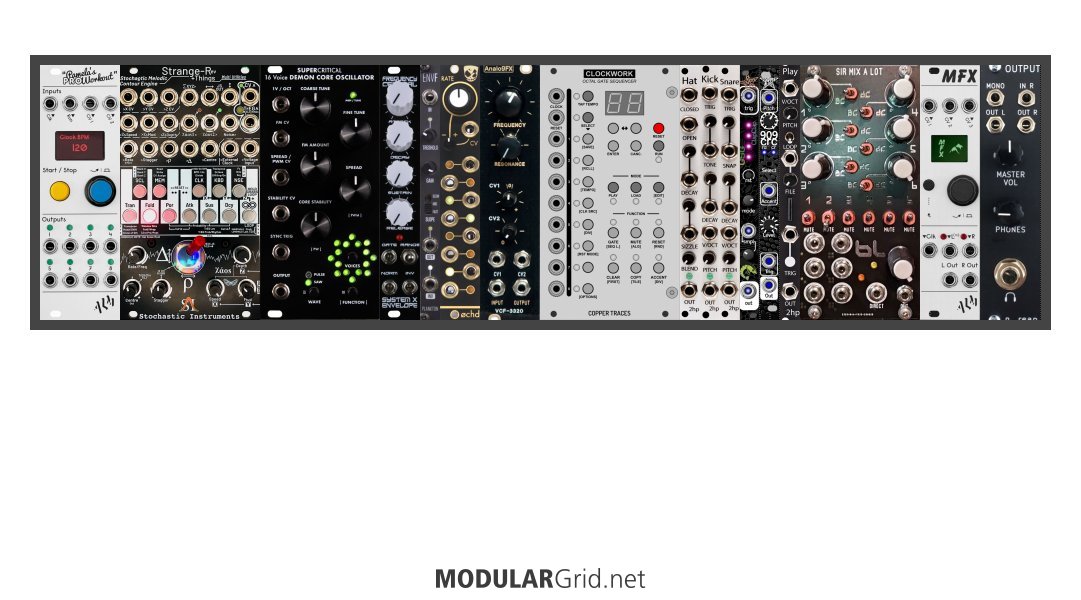at around $3,000 this configuration might actually fit into my budget, and it still meets my total production capability aspirations. how do i go about getting a 1x3u 100hp case and what would that cost? can someone please critique this design? im looking for genuine feedback. i think i covered all my bases, but it would be nice to hear some genuine comments from the community...
please take a look and tell me what yathink
peace ✌️👾✌️.
-- singular_sound
For the cost of all of the drum and sample modules, you could get an ALM Squid Salmple for less money and eight channels individally triggered. Spend a couple of hundred dollars more, you could get a Rossum Assimil8tor which gives you eight channels of samples and lots of inputs for modulation. It can also produce single cycle waveforms (oscillator) and can sample and play back CV modulation. Personally, I think your rack has too much sequencing and not enough modulation or VCA's. Modulation is what makes Eurorack so powerful. I would pull your sequencing out of the case as there are lots of standalone options that are more cost effective. Believe it or not, if you take your two sequencers and the Pams Workout, you could just about afford a Squarp Hapax (see Thomann) which is an awesome and powerful 'forever' sequencer that gives you plenty of room to grow.

